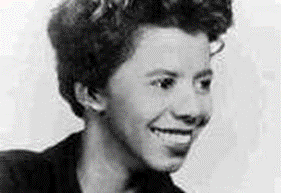
Introduction
For those who are first generation college students, there is the exhilaration of living our own dreams, and the dreams of parents and even ancestors. But even as education expands our horizons, it may threaten to encroach upon familial and communal ties.
Lorraine Hansberry’s portrait of the Younger family, in the play A Raisin in the Sun, reveals intricate dynamics between revered belief systems and evolving perspectives across generations of African Americans in 20th century Chicago. As audience members to this play, we may become aware of our own critical tensions regarding the role of spirituality as liberating or oppressing, and the relationship between education and consciousness.
The play explores these generational divides through the story of a family impacted by racial marginalization such as inadequate housing for Black Americans in that time period.
Theoretical Groundings
Womanist theology frameworks center Black women’s experiences (Cannon, 1985), providing insights into Lena Younger’s spirituality as an anchor amidst uncertainty. Critical race theory examines systemic inequities and racist social structures as formative contexts, including effects on religious institutions and beliefs (Delgado & Stefancic, 2017). Together these frameworks analyze dynamics between Lena’s faith rooted in survival and hope and Beneatha’s emerging humanist secularism.
Analysis of Key Exchanges and Motivations
In the following pivotal scene, Lena references her Christianity while congratulating Beneatha’s medical ambitions, inciting backlash regarding God’s relevance. Beneatha dismisses the blessing as antiquated while sister-in-law Ruth declares atheism (Hansberry, 1959).
Their blunt posture ignores the way Lena’s theology intertwines with navigating racism and poverty. From Lena’s standpoint, their hubris fails to respect how generations found sustaining spiritual strength countering dehumanization through sacred dignity (Cone, 1997).
The daughters’ attitudes reflect an over-correction discarding positive functions of faith alongside justified critiques. For Lena, beyond providing hope and dignity, Christianity nurtured communal bonds and mechanics of resistance passing down knowledge and strategies through the generations. (Daniel Zopoula, “The Role of Religion in Fostering Community.”) This scene illustrates risks of severing those ties in modernization’s wake alongside needs to sustain lineages of strong souls who came before.
Conclusion
The play sparks productive debate regarding whether this pivotal scene offers primarily religious critique or tradition-bound critique. Removing spirituality risks severing time-tested communal bonds. Faith provides more than identity across the generations - it is a form of resistance.
References
Cannon, K.G. (1985). The emergence of Black feminist consciousness. In Feminist Interpretations of the Bible (pp. 30-40). Westminster John Knox Press.
Cone, James (1997). Black Theology and Black Power, Orbis Press.
Delgado, R. & Stefancic, J. (2017). Critical race theory: An introduction. NYU Press.
Douglas, K.B. (2015). Stand your ground: Black bodies and the justice of God. Orbis Books.
Hansberry, L. (1959). A Raisin in the Sun. Samuel French. Zopoula, Daniel. (2023) “The Role of Religion in Fostering Community



